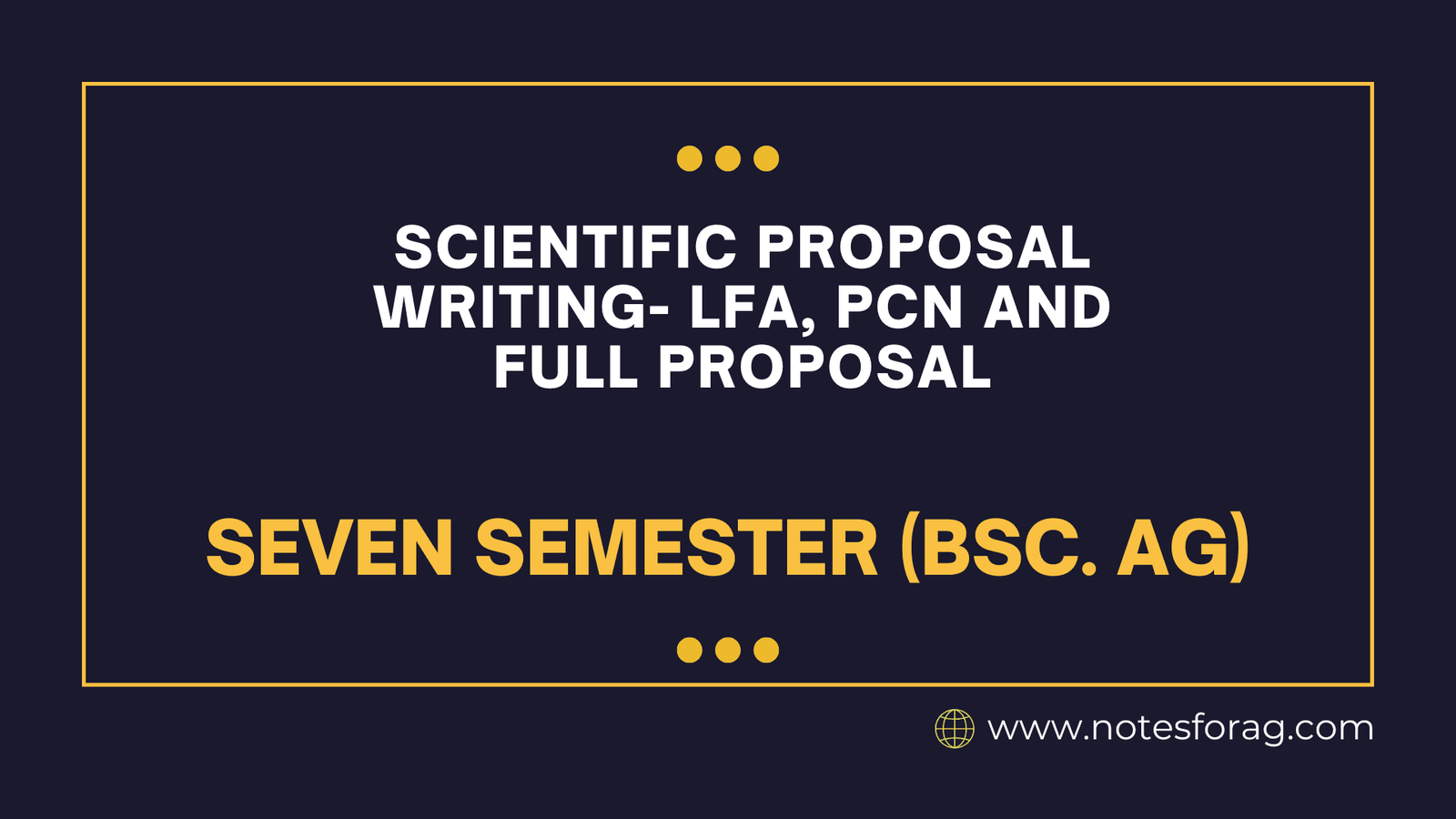What is scientific proposal writing?
Scientific proposal writing involves drafting a detailed plan for a research or project idea. The proposal outlines the project’s goals, methods, and expected outcomes. It is typically used to request funding or approval from organizations or agencies.
Scientific proposal writing is crucial when seeking funding or approval for a research or development project. It outlines the project’s goals, methods, and expected results in a clear and structured way. Different formats are used depending on the project’s stage and the requirements of the funding agency or institution. The three main formats of scientific proposal writing include the Logical Framework Approach (LFA), Project Concept Note (PCN), and Full Proposal. Each serves a distinct purpose in the proposal process.
Table of Contents
1. Logical Framework Approach (LFA)
The Logical Framework Approach (LFA) is a tool that organizes complex projects into clear, manageable sections. LFA is one of the formats of scientific proposal writing. It is often required by development agencies or research institutions because it helps to clearly define project goals, track progress, and evaluate success.
The LFA uses a “logframe” table, which consists of the following elements:
Goal (Impact): The long-term effect or change the project aims to bring about.
Purpose (Outcome): The specific short- to medium-term objectives the project intends to achieve.
Outputs: The direct, measurable results of the project’s activities (such as reports or products).
Activities: The tasks and actions required to produce the outputs.
Inputs: The resources needed (such as time, money, and expertise) to carry out the activities.
Each part of the logframe is accompanied by indicators to measure progress, means of verification to track data, and assumptions to identify risks. This method helps ensure that all stages of the project are logically connected and that each step contributes to the overall goal.
When to Use LFA
- For complex projects requiring a structured and detailed plan.
- When a funding agency requests this specific format.
- When a project needs regular tracking and evaluation.
2. Project Concept Note (PCN)
The Project Concept Note (PCN) is a concise document that provides a brief overview of the proposed project. It summarizes the project’s idea, objectives, methodology, and expected impact in just a few pages (typically 2-4 pages). It is often submitted as a preliminary proposal before developing a more detailed full proposal. The purpose is to provide a quick snapshot of the project to gauge interest from funders.
Key components of a PCN include:
Project Title: A clear and concise title summarizing the project.
Problem Statement: A brief explanation of the problem or issue the project aims to address.
Objectives: The specific goals of the project.
Methodology: A summary of the approach and methods to be used.
Expected Outcomes: The intended results or impact of the project.
Budget Overview: A rough estimate of the project’s cost.
Timeframe: The projected timeline for the project’s implementation.
When to Use PCN
- As an initial submission to a potential funder.
- When seeking to gauge interest before preparing a full proposal.
- When a short summary of the project is needed.
3. Full Proposal
The Full Proposal is a comprehensive document that presents the project in detail. After the PCN is accepted, a full proposal is typically required to provide complete information on the project. It includes everything needed for the funder to fully evaluate the project.
A full proposal typically contains the following sections:
Executive Summary: A brief summary of the entire proposal, covering key points like the problem, objectives, methods, and outcomes.
Introduction/Background: An in-depth explanation of the issue the project addresses, supported by relevant data or research.
Objectives: A detailed outline of the project’s goals, both short-term and long-term.
Methodology: A comprehensive description of how the project will be conducted, including research design, data collection methods, and the technologies or tools to be used.
Work Plan/Timeline: A clear timeline of activities and key milestones.
Budget: A detailed breakdown of costs, including personnel, equipment, materials, and other expenses, with justifications.
Expected Results: The projected outcomes and their anticipated impact, along with success indicators.
Evaluation/Monitoring Plan: A description of how the project’s progress will be monitored and evaluated.
Sustainability: An explanation of how the project’s benefits will continue after its completion, particularly if the project involves long-term community involvement or capacity building.
When to Use a Full Proposal
- When applying for full funding from a research or development organization.
- When detailed information and a well-developed plan are required.
- When stakeholders or funders need a comprehensive understanding of the project.
Conclusion
Scientific proposal writing varies depending on the project’s stage and the requirements of the organization or funding body. The LFA is a useful tool for organizing complex projects into clear, measurable components. The PCN provides a high-level summary of the project, often used as an initial submission. The Full Proposal offers a detailed plan, covering all aspects of the project. Using these formats appropriately increases the likelihood of securing funding or support for the project.
Frequently Asked Questions (FAQ)
What is scientific proposal writing?
Scientific proposal writing involves drafting a detailed plan for a research or project idea. The proposal outlines the project’s goals, methods, and expected outcomes. It is typically used to request funding or approval from organizations or agencies.
What are the main formats of scientific proposals?
The three main formats of scientific proposal writing are:
Logical Framework Approach (LFA)
Project Concept Note (PCN)
Full Proposal
Each serves a different stage of the proposal process and varies in complexity.
Related Articles

